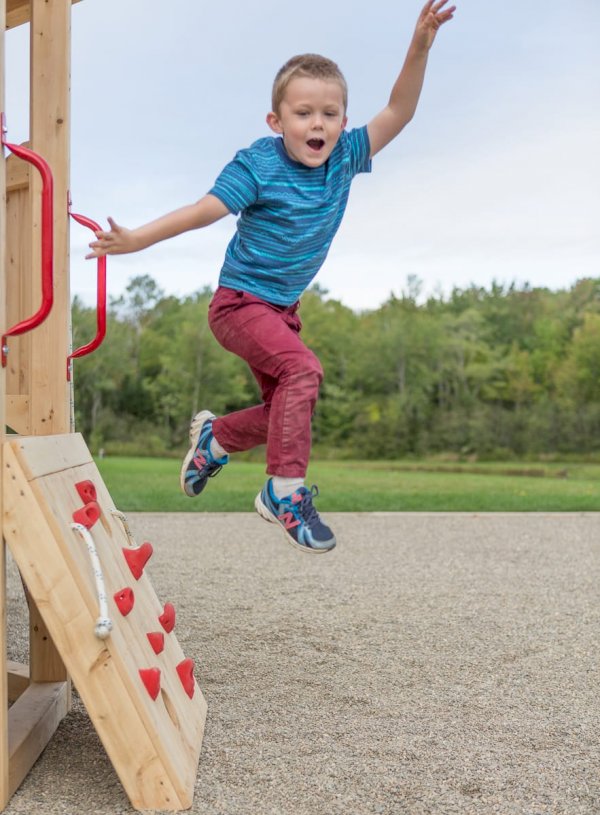Catalog Mailing Address
Planning for your new playset: preparing your yard
Expert Advice | 6 years ago

Spring is here! Even up in Maine where we are, the snow is mostly melted and early flowers are peeking out as the ground thaws.
If you are planning to buy your family a playset this season, now is the time to make sure your yard is ready. Once you’ve determined where on your yard to locate your playset: an area that is level and has enough space for your playset with at least 6 feet of clear space all around, more if you have swings (for more information on how much room you need for your playset, please see the Space Requirements section of Swing Sets 101), you need to choose a ground surface material.
The Consumer Product Safety Commission recommends that all swing sets and playsets be placed on an impact attenuating surface to prevent severe injury from falls. Though grass may be the most common surface for residential playsets, there are better, safer alternatives that are also easier to maintain (no mowing around the set or mud puddles under the swings).
The following options will improve safety compared to grass. These options are presented in general order of expense from low to high although significant regional and market differences exist:
Bark mulch is relatively inexpensive and readily available, but it tends to degrade quickly and thus needs frequent replenishment. It also traps moisture around wooden playset components on the ground which can hasten the playset’s deterioration.It is also higher maintenance than some ground materials because weeds grow up through it.
Wood chips are also fairly inexpensive and regionally available. They degrade moderately quickly and need occasional replenishment. They also have the same issues as bark mulch in terms of trapping moisture and allowing weeds growth.
Small stone, which is sometimes called pea stone or pea gravel is very long-lasting and has good drainage which is better for wooden playsets. It also reduces weed growth so it is lower maintenance than bark mulch or wood chips. It’s disadvantages are that it is not as comfortable on bare feet (although we have used it in some of our photo shoots and kids always seem perfectly happy to kick off their shoes and run around on it - whether we want them to or not!). It is also moderately expensive.
Sand looks nice, it is soft on bare feet, and it reduces weed growth, so it is a fairly low maintenance material. It can tend to be a repository for animal waste, however (think giant kitty litter box), and it can become compacted or wind blown, so it is not as impact absorbing as other materials meaning it may not be effective at preventing serious injury. It is also moderately expensive depending on where you live.
Shredded rubber is very long-lasting with excellent drainage and it reduces weed growth. It is an artificial material, however, which may not be what you want in your yard. It is also one of the more expensive ground surface materials.
Artificial grass is also very long-lasting and requires virtually no maintenance. It can also provide maximum safety but only with the appropriate substrate. Again, it is an artificial material, and it is very expensive.
Poured rubber is another ground surface material that is very long-lasting and requires virtually no maintenance while providing maximum safety. It is also an artificial material, and it is very expensive.
What you choose is up to you depending on your budget and preferences. Our favorite material is small stone, as it is all natural and easily available. We use it in our display area and find it looks nice even without maintenance. Whatever you choose, however, ground surfacing has a significant impact on the safety of your set.
The appropriate depth of ground surfacing materials along with other safety tips can be found on the Consumer Product Safety Commission website (link).
For more information about preparing for your swing set, visit Swing Sets 101.
#family#outdoor
#parenting
#safety
#swing-set
